Lymph nodes where are they located. Lymph Nodes: Location, Function, and Role in Cancer Detection
Where are lymph nodes located in the body. How do lymph nodes help fight infections. What happens when cancer spreads to lymph nodes. How are cancerous lymph nodes detected. What is the significance of swollen lymph nodes.
Understanding the Lymphatic System and Lymph Node Function
Lymph nodes are small, bean-shaped structures that play a crucial role in our body’s immune system. These tiny powerhouses are scattered throughout the body, forming an intricate network known as the lymphatic system. But what exactly do lymph nodes do, and why are they so important?
Lymph nodes act as filters for the lymphatic fluid that circulates throughout our body. This fluid contains various substances, including:
- Metabolic waste products
- Toxins
- Bacteria and viruses
- Cellular debris
As the lymph fluid passes through these nodes, harmful substances are trapped and eliminated, while beneficial immune cells are activated to fight off potential threats. This filtering process is essential for maintaining our overall health and well-being.

How do lymph nodes contribute to immune function?
Lymph nodes contain a high concentration of immune cells, particularly lymphocytes. When potentially harmful substances are detected, these immune cells spring into action. They multiply rapidly and produce antibodies to neutralize threats. This process is what causes lymph nodes to swell during infections or illnesses.
Mapping the Body’s Lymph Node Locations
Lymph nodes are strategically positioned throughout the body to maximize their effectiveness in filtering lymph fluid and combating infections. While there are hundreds of lymph nodes in the human body, certain areas have higher concentrations of these important structures.
Where are the major lymph node groups located?
The main clusters of lymph nodes can be found in the following areas:
- Neck (cervical lymph nodes)
- Armpits (axillary lymph nodes)
- Chest (mediastinal lymph nodes)
- Abdomen (mesenteric lymph nodes)
- Groin (inguinal lymph nodes)
Some lymph nodes are located deep within the body cavity, near vital organs like the lungs or intestines. Others are closer to the skin’s surface, such as those in the neck or armpits, making them more easily palpable during physical examinations.

The Connection Between Lymph Nodes and Cancer
While lymph nodes play a crucial role in maintaining our health, they can also be affected by cancer in various ways. Understanding this connection is vital for early detection and proper treatment of certain cancers.
How does cancer interact with the lymphatic system?
Cancer can affect lymph nodes in two primary ways:
- Cancer originating in lymph nodes (lymphoma)
- Cancer spreading from another part of the body to lymph nodes (metastasis)
Lymphoma is a type of cancer that starts in the lymphatic system itself. On the other hand, many other cancers, such as breast, skin, and gastrointestinal cancers, can spread to nearby lymph nodes as they progress.
Why is lymph node involvement significant in cancer staging?
The presence of cancer cells in lymph nodes is an important factor in determining the stage of cancer. Generally, cancers that have spread to lymph nodes are classified as stage 2 or 3, depending on the extent of lymph node involvement. This information helps oncologists determine the most appropriate treatment approach and predict the overall prognosis.
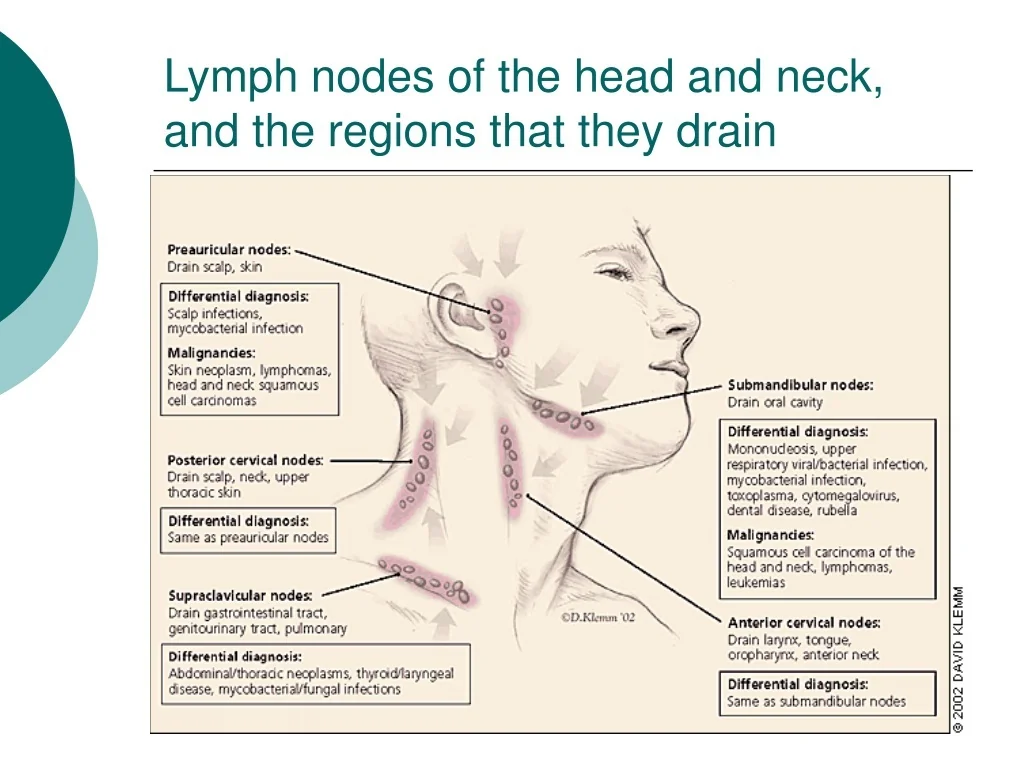
Detecting Cancer in Lymph Nodes: Symptoms and Diagnostic Techniques
Identifying cancer that has spread to lymph nodes is crucial for proper staging and treatment planning. There are several signs and diagnostic methods used to detect cancerous lymph nodes.
What are the signs of cancerous lymph nodes?
When cancer spreads to lymph nodes, they may exhibit the following characteristics:
- Swelling or enlargement
- Hardness or firmness to the touch
- Tenderness (in some cases)
- Limited mobility (they may feel fixed in place)
It’s important to note that not all swollen lymph nodes are cancerous. They can also enlarge due to infections or other non-cancerous conditions.
How are cancerous lymph nodes diagnosed?
Several diagnostic techniques are used to identify and confirm the presence of cancer in lymph nodes:
- Physical examination: Palpation of accessible lymph nodes
- Imaging studies: Ultrasound, MRI, or CT scans to visualize internal lymph nodes
- Sentinel lymph node mapping: Using radioactive dye to identify the first nodes likely to be affected by cancer spread
- Biopsy: Surgical removal of suspicious lymph nodes for microscopic examination
These methods allow healthcare providers to accurately assess lymph node involvement and guide treatment decisions.

Lymph Nodes and Breast Cancer: A Closer Look
Breast cancer’s relationship with the lymphatic system is particularly significant, as it often spreads first to nearby lymph nodes. Understanding this connection is crucial for breast cancer screening, diagnosis, and treatment.
How does breast cancer interact with lymph nodes?
Breast cancer cells can break away from the primary tumor and travel through lymphatic vessels to nearby lymph nodes. The axillary lymph nodes (located in the armpit) are often the first to be affected in breast cancer cases. This is why healthcare providers pay close attention to these nodes during breast examinations and cancer staging.
What is the significance of sentinel lymph nodes in breast cancer?
Sentinel lymph nodes are the first lymph nodes to which cancer is likely to spread from the primary tumor. In breast cancer, identifying and examining these nodes is crucial for accurate staging and treatment planning. The sentinel lymph node biopsy procedure involves:

- Injecting a radioactive tracer or dye near the tumor
- Using specialized equipment to identify the sentinel nodes
- Surgically removing these nodes for examination
- Analyzing the nodes for the presence of cancer cells
This procedure helps determine if cancer has spread beyond the breast tissue and guides decisions about further treatment, such as additional surgery or systemic therapies.
Lymphedema: A Potential Complication of Cancer Treatment
While treating cancer that has spread to lymph nodes is crucial, it’s also important to be aware of potential complications that can arise from these treatments. One such complication is lymphedema, a condition that can significantly impact a patient’s quality of life.
What is lymphedema and how does it occur?
Lymphedema is a condition characterized by swelling in the arms or legs due to a buildup of lymphatic fluid. It can occur when lymph nodes are removed during cancer surgery or damaged by radiation therapy. Without properly functioning lymph nodes, the lymphatic system may struggle to drain fluid effectively, leading to accumulation and swelling in the affected limb.
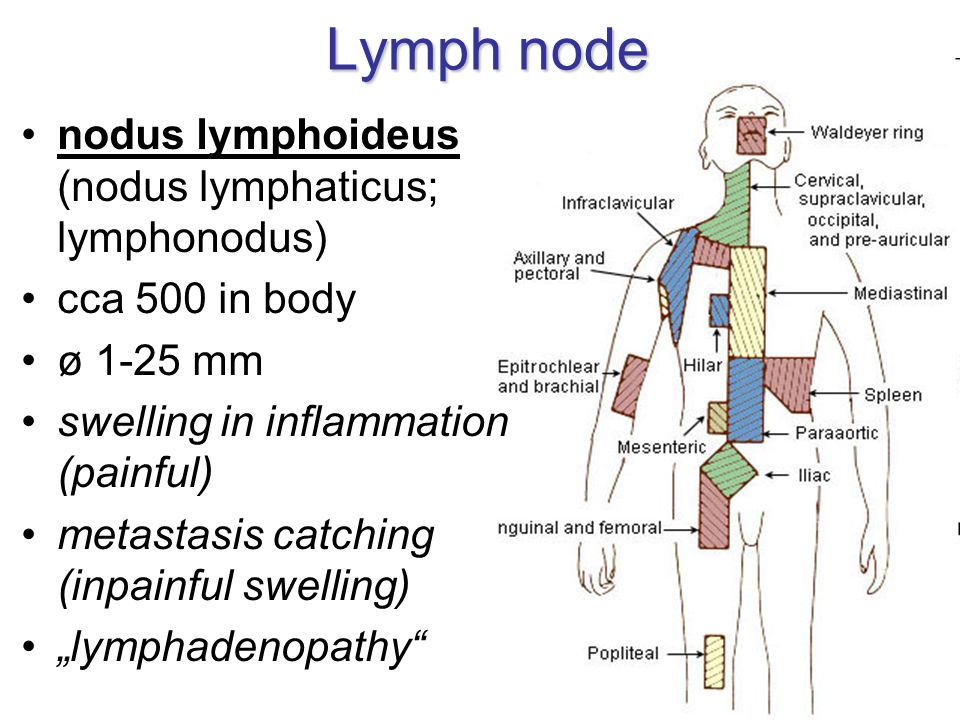
Who is at risk for developing lymphedema?
Patients who have undergone the following treatments are at an increased risk of developing lymphedema:
- Surgical removal of lymph nodes (lymph node dissection)
- Radiation therapy to lymph node regions
- Extensive surgery that may damage lymphatic vessels
While lymphedema is most commonly associated with breast cancer treatment, it can also occur following treatment for other cancers, such as melanoma, gynecological cancers, or head and neck cancers.
How is lymphedema managed?
Management of lymphedema typically involves a multifaceted approach:
- Compression garments to encourage fluid drainage
- Manual lymphatic drainage (specialized massage techniques)
- Exercise and movement to stimulate lymph flow
- Skin care to prevent infections
- In some cases, surgical interventions to improve lymphatic drainage
Early detection and intervention are key to managing lymphedema effectively and minimizing its impact on a patient’s daily life.
Advanced Techniques in Lymph Node Assessment and Treatment
As our understanding of the lymphatic system’s role in cancer progression grows, so do the techniques used to assess and treat affected lymph nodes. These advancements aim to improve accuracy in cancer staging while minimizing potential complications.
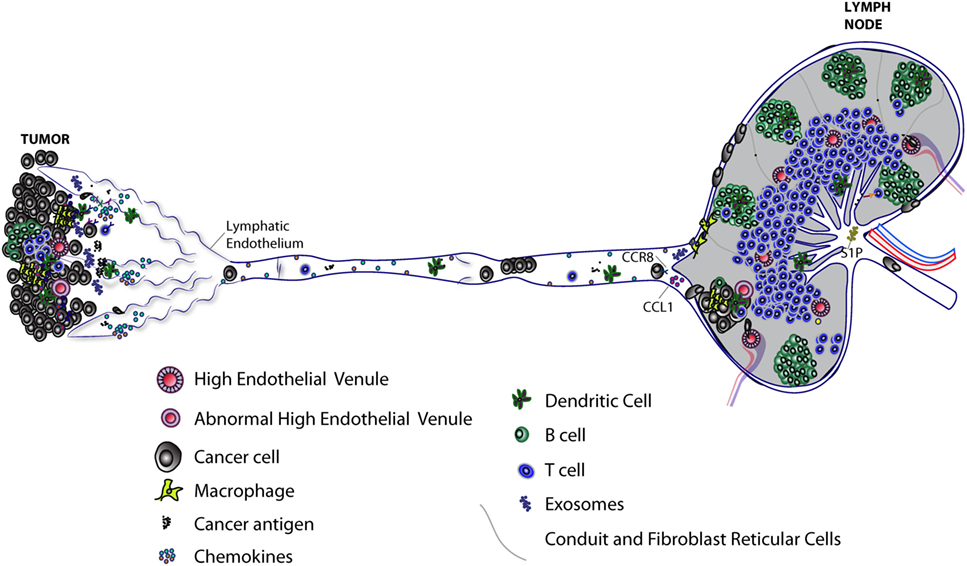
What is axillary lymph node dissection?
Axillary lymph node dissection (ALND) is a surgical procedure used when cancer is found in the sentinel lymph nodes. It involves removing multiple lymph nodes from the armpit area to determine the extent of cancer spread and to reduce the risk of recurrence. While effective, this procedure can increase the risk of lymphedema and other complications.
How are less invasive techniques being developed?
Researchers and clinicians are continually working on less invasive methods to assess and treat affected lymph nodes. Some emerging techniques include:
- Targeted axillary dissection: Combining sentinel node biopsy with removal of specific nodes identified as suspicious on imaging
- Axillary reverse mapping: A technique to identify and preserve lymphatic drainage pathways during surgery
- Immunotherapy approaches: Harnessing the body’s immune system to target cancer cells in lymph nodes
- Molecular testing: Analyzing lymph node samples for specific genetic markers to guide treatment decisions
These advancements aim to provide more personalized and effective treatments while reducing the risk of long-term complications like lymphedema.
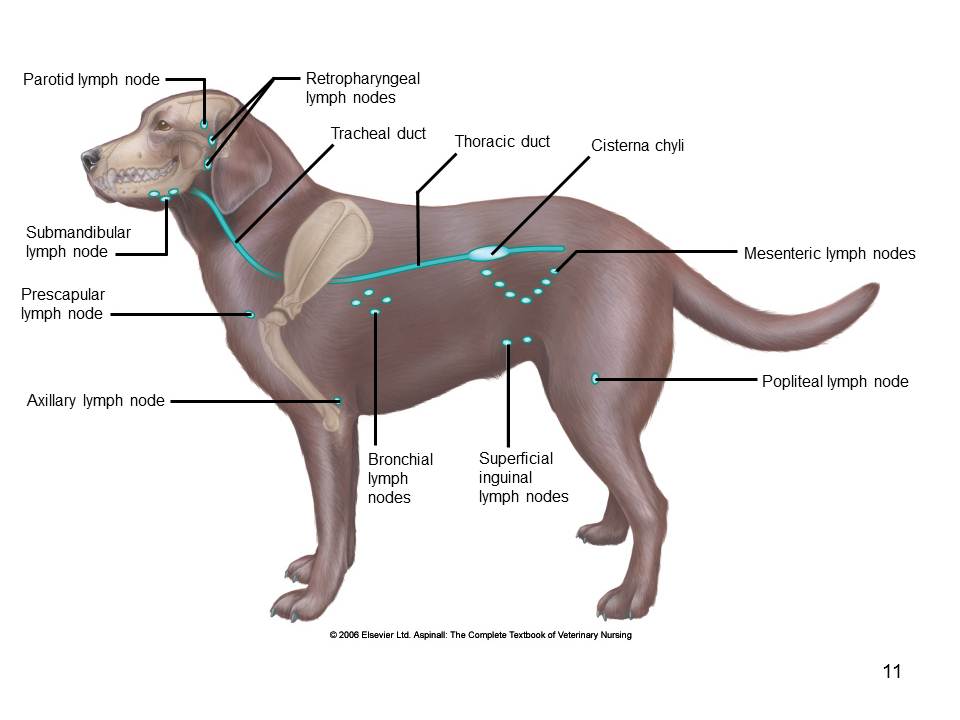
The Importance of Regular Health Screenings and Lymph Node Awareness
Understanding the role of lymph nodes in our overall health and in cancer progression emphasizes the importance of regular health screenings and self-awareness. Being proactive about our health can lead to earlier detection of potential issues and better outcomes.
How can individuals monitor their lymph node health?
While not all lymph nodes are easily accessible, there are steps individuals can take to monitor their lymph node health:
- Perform regular self-examinations of accessible areas like the neck, armpits, and groin
- Be aware of persistent swelling or lumps in these areas
- Pay attention to unexplained symptoms like fever, night sweats, or weight loss
- Report any concerning findings to a healthcare provider promptly
What role do regular health screenings play in lymph node health?
Regular health screenings and check-ups are crucial for maintaining overall health and detecting potential issues early. During these visits, healthcare providers may:

- Perform physical examinations to check for swollen lymph nodes
- Discuss any symptoms or concerns you may have
- Recommend appropriate cancer screenings based on age, risk factors, and family history
- Provide guidance on maintaining a healthy lifestyle to support immune function
By staying informed about lymph node health and participating in regular screenings, individuals can play an active role in their overall well-being and potentially catch any issues at an early, more treatable stage.
Lymph Nodes Breast Lumps Newport Beach
Lymph nodes are small, round interconnected structures throughout the body that play an integral role in immune function, helping to fight off disease and infection. The lymph nodes are part of the lymphatic system, the body’s natural drainage and filtration system, collecting and funneling out fluid, metabolic waste, toxins, and bacteria and viruses that can pose a serious risk to a person’s health and well being.
Lymph nodes contain immune cells, and when the system is functioning properly they help to fight off toxins and illness. When there is an infection or a proliferation of toxins or cancer cells, the lymph nodes can become swollen and inflamed, indicating that there is a problem.
Continue Reading ↓
Lymph Nodes and Breast Cancer
Lymph nodes are located in various locations throughout the body. In some places they are located deep within the body cavity near vital organs like the lungs, or near the bowels; in other parts of the body they can be much closer to the surface of the skin, such as the neck or armpits. Cancer can either originate in the lymph nodes, known as lymphoma, or it can originate and spread from another part of the body, such as the breasts.
Cancer can either originate in the lymph nodes, known as lymphoma, or it can originate and spread from another part of the body, such as the breasts.
Lymphedema
In addition to the potential for breast cancer to metastasize (spread) to the lymph nodes, women who have undergone treatment for breast cancer are also at risk for developing a condition known as lymphedema. Lymphedema causes mild to severe swelling in the arms and legs due to a blockage that prevents the lymphatic system from properly draining fluid after lymph nodes have either been removed, or targeted with cancer treatments, like radiation and chemotherapy. With nowhere to go, fluid builds up in the affected limb and causes swelling.
Lymph Node and Cancer Testing and Treatment
Sentinel Lymph Node Mapping
Sentinel lymph nodes are most often the first to be affected when cancer spreads from another part of the body. Lymph node mapping is a procedure used before a biopsy to help locate the sentinel nodes, using a targeted injection of radioactive dye to help make the nodes visible on a diagnostic scan.
Biopsy
Once the sentinel nodes targeted by the dye are identified, they are surgically removed and sent to a pathology lab to be tested for cancer cells.
Axillary Lymph Node Dissection
If lymph nodes are found to contain cancer cells, a lymph node dissection is the procedure used to surgically remove them.
Contact a Breast Cancer Specialist Today
For compassionate, professional diagnosis and treatment for breast cancer, do not hesitate to contact Dr. Sadia Khan, a fellowship-trained breast surgeon at Hoag Breast Care Center in Newport Beach. Please call 949.390.9381 to schedule a comprehensive consultation today!
Next, read about Normal Breast Anatomy.
What happens when cancer spreads to the lymph nodes?
We all know we have them, but many of us will probably admit, we have no idea what they are, what they do or what it means when cancer spreads to the lymph nodes.
We have hundreds of lymph nodes spread throughout the body including the neck, armpit, chest, abdomen and groin. Shaped like a small bean, they are part of the body’s immune system that help fight infection and disease. As fluid passes through the lymphatic system, the lymph nodes are tasked with the important job of filtering out toxins and fighting infection by attacking and destroying germs. The fluid is then returned to the large veins in the chest.
Shaped like a small bean, they are part of the body’s immune system that help fight infection and disease. As fluid passes through the lymphatic system, the lymph nodes are tasked with the important job of filtering out toxins and fighting infection by attacking and destroying germs. The fluid is then returned to the large veins in the chest.
As some cancers become more advanced, they are more prone to spread to the lymph nodes through the tiny lymphatic ducts. These include cancers of the breast, skin (melanoma), gastrointestinal tract, liver, pancreas, lungs, head and neck as well as endocrinological, urological and gynecological cancers. Cancer can also start in the lymph nodes. These are called lymphomas.
“In general, cancers that have spread to the lymph nodes are typically stage 2 or 3,” says Juan Santamaria, MD, Nebraska Medicine surgical oncologist. “Many of these cancers are still treatable and even curable at this stage. Cancer that has spread widely through the body is considered metastatic and is called a stage 4 cancer. ”
”
How do you know when cancer has spread to the lymph nodes?
When cancer has spread to a lymph node, it will usually become swollen and enlarged, will feel hard and may or may not be tender to the touch, Dr. Santamaria says. A swollen lymph node may still only be about the size of a grape or larger. However, while some lymph nodes will be visible or noticeable when they become enlarged, many are not, such as those inside the chest or abdomen.
How to detect cancerous lymph nodes
An ultrasound, MRI or CT scan can detect enlarged lymph nodes that aren’t outwardly visible. If detected, a biopsy will usually be performed to check for cancer. During breast and skin cancer surgery, a sentinel node biopsy is typically performed in which a few lymph nodes are removed to check for cancer.
How is cancer treated once it has spread to the lymph nodes?
Cancer that has spread to the lymph nodes is removed through surgery or may be treated with chemotherapy, radiation, other anti-cancer medicines such as antibodies, CAR -T cells, small molecule drug inhibitors or a combination of these.
When lymph nodes are removed from the armpits or groin with surgery, 30% to 50% of patients will develop lymphedema of the arms or legs. Lymphedema develops when there is a blockage anywhere along the lymphatic system pathway and leads to swelling of the arms or legs, pain, possible infection and reduced mobility.
As a result, there are several studies in progress to determine if radiation may be a better alternative than surgery, says Dr. Santamaria.
If you notice a swollen lymph node that does not get better after two weeks (lymph nodes can become swollen with infection), consider making an appointment with your doctor to get it evaluated.
Schedule a consultation
To schedule a consultation with one of our cancer specialists, call 402.559.5600.
13 preventive screenings: why they’re important and who needs them most
Screenings save thousands of lives. By detecting treatable illnesses with an inexpensive screening, many people can avoid costly hospital care, surgeries and even terminal disease. See if you’re overdue for any of these 13 critical screenings.
See if you’re overdue for any of these 13 critical screenings.
Read More
You asked, we answered: Why do my lymph nodes swell after vaccination?
Why do armpit lymph nodes swell?
Read More
Lymphoma survivor Nick Howe welcomes twin boys into family
As part of Nick’s ongoing journey post-cancer, he is committed to helping others who face similar battles.
Read More
ultrasound of the iliac lymph nodes in St. Petersburg – the price is 1200 rubles in the center for ultrasound diagnostics “Affordable Medicine”
Old price:
1,900 rubles
Price:
1,200 rubles
Sign up
- Prices
- Description
- Addresses
- Execution time
30 minutes
Description
Lymph nodes are part of the lymphatic system that protects our body from infections, toxins and our own mutating cells. The iliac lymph nodes are located in the lower abdomen on the left and right, along the iliac veins. The nodes pass through themselves the lymph coming from the pelvic organs, as well as from the inguinal lymph nodes. The number of iliac lymph nodes reaches a dozen on each side.
The iliac lymph nodes are located in the lower abdomen on the left and right, along the iliac veins. The nodes pass through themselves the lymph coming from the pelvic organs, as well as from the inguinal lymph nodes. The number of iliac lymph nodes reaches a dozen on each side.
Normally, the lymph nodes in this area are not palpable. When magnified, they are also not visible, as they are located deep. Most often they are found on CT during examination for another reason.
Indications for ultrasonography of iliac lymph nodes
The following signs will indicate the need for an ultrasound examination:
- The patient has vague, dull pains in the lower abdomen, in the area of the pelvic bones;
- Pain that appears or increases with defecation or urination is a characteristic sign of inflammation of the iliac lymph nodes;
- General malaise, weakness;
- Diseases of the genitourinary organs, acute or recent;
- Scans show enlarged iliac lymph nodes;
- The inguinal lymph nodes are also enlarged, and the pathologies that led to this are already known.

What can be seen on an ultrasound
- Swollen nodes lose their bean shape and become more rounded;
- They increase in size;
- Lymphoid substance grows – evenly or in patches;
- The sheath may be thickened or, on the contrary, thinned and soldered to the surrounding tissues;
- Soft spots, cysts, tumor cells may be found.
Preparing for iliac lymph node ultrasound
No special training is required to perform an ultrasound examination. The patient exposes the abdomen, lowering the linen as low as possible. The uzist lubricates the sensor with contact gel, puts it to the skin and, moving and tilting, looks at the lymph nodes on the screen. Then he writes a conclusion. The whole procedure takes 20-25 minutes.
Contraindications for ultrasonography of lymph nodes
Ultrasound diagnostics is not an endoscopic or invasive procedure, it does not carry radiation exposure and does not affect organs and tissues in any way. Therefore, it has no contraindications.
Prices
Ultrasound of all peripheral and retroperitoneal lymph nodes RUB 3,700 3000 |
| org/Product”> |
Ultrasound of cervical lymph nodes 1 900 rub 1 200 |
| org/Product”> |
Ultrasound of supraclavicular lymph nodes 1 900 rub 1 200 |
| org/Product”> |
Ultrasound of axillary lymph nodes 1 900 rub 1 200 |
| org/Product”> |
| org/Product”> |
Ultrasound of para-aortic lymph nodes 1 900 rub 1 200 |
| org/Product”> |
Ultrasound of mesenteric lymph nodes 1 900 rub 1 200 |
| org/Product”> |
Ultrasound of popliteal lymph nodes 1 900 rub 1 200 |
| org/Product”> |
Addresses of diagnostic centers “Affordable Medicine”
St. Petersburg, m. Vosstaniya Square, st. 1st Sovetskaya, 8
How to get there?
St. Petersburg, Narvskaya metro station, Stachek Square, 9
How to get there?
Saint-Petersburg, m. Prosveshcheniya, Engels prospekt, 138 building 1
How to get there?
+7 (812) 380-83-84
info@domedica24. ru
ru
Swollen lymph nodes behind the peritoneum: causes, symptoms and treatment
Contents
- 1 What does “swollen lymph nodes behind the peritoneum” mean?
- 1.1 Swollen lymph nodes behind the peritoneum
- 1.2 What is it?
- 1.3 Causes
- 1.4 Symptoms
- 1.5 Diagnosis
- 1.6 Treatment
- 1.7 Prevention
- 1.8 Possible complications
- 1.9 Diet
- 1.10 Medical treatment
- 1.11 Surgery
- 1.12 Physiotherapy
- 1.13 Alternative treatments
- 1.14 Expert advice
- 1.15 Life after treatment
- 1.16 How to protect yourself from the disease:
- 1.17 When to see a doctor?
- 1.18 Related videos:
- 1.19 Q&A:
- 1.19.0.1 What causes can lead to enlarged lymph nodes behind the peritoneum?
- 1.19.0.2 What symptoms may indicate enlarged lymph nodes behind the peritoneum?
- 1.19.0.3 How is lymph node enlargement behind the peritoneum diagnosed?
- 1.
 19.0.4 What is lymphadenopathy?
19.0.4 What is lymphadenopathy? - 1.19.0.5 How long can the treatment of enlarged lymph nodes behind the peritoneum last?
- 1.19.0.6 What are the possible complications of enlarged lymph nodes behind the peritoneum?
- 1.19.0.7 Are there any preventive measures to prevent enlarged lymph nodes behind the peritoneum?
“Swollen lymph nodes behind the peritoneum” is a pathological condition that may be associated with various diseases that require mandatory treatment. In this article, we will look at the causes of enlarged lymph nodes, the symptoms and diagnosis of this condition.
Lymph nodes are an important part of the human immune system. They are involved in protecting the body from infections, diseases and pathogens. When inflammation, infection, or disease occurs in the body, the lymph nodes can increase in size and become more sensitive. Swollen lymph nodes behind the peritoneum are common and can be due to various causes.
One of the causes of swollen lymph nodes behind the peritoneum may be an infection that causes inflammation in this area of the body. It could be an infection of the bladder, intestines, stomach, liver, or kidneys.
Another possible cause of swollen lymph nodes behind the peritoneum is cancer, such as lymphoma. It causes the growth of malignant cells in the lymph nodes and can lead to their enlargement and unusual location.
Symptoms of swollen lymph nodes may include abdominal pain, enlargement, fever, and unusual fatigue. Often there is also a need for frequent urination or lack of appetite.
Treatment of enlarged lymph nodes behind the peritoneum depends on the cause of this phenomenon. In some cases, no specific therapy is required, while in others, surgery or treatment with radiotherapy and chemotherapy may be required.
Swollen lymph nodes behind the peritoneum
Lymph nodes behind the peritoneum are part of the lymphatic system that plays an important role in the body’s immunity. They are located in the posterior abdominal space and act as a filter, retaining microbes and other pathogens that can enter the body through the blood and lymph.
They are located in the posterior abdominal space and act as a filter, retaining microbes and other pathogens that can enter the body through the blood and lymph.
Swollen lymph nodes behind the peritoneum (retroperitoneal) can occur as a result of various causes, including infectious, oncological and immune diseases. The most common cause is cancer metastasis from nearby organs.
Symptoms of swollen lymph nodes behind the peritoneum may include abdominal pain, loss of appetite, weight loss, fever, weakness and fatigue. In the case of oncological diseases, the appearance of tumors and stagnant fluid in the abdominal cavity can be observed.
Treatment of swollen lymph nodes behind the peritoneum depends on the cause and nature of the disease. Usually, laboratory and instrumental studies are carried out to establish a diagnosis. Treatment may include drugs, chemotherapy, radiation therapy, and surgery if a node or tumor needs to be removed.
It is important to see a doctor if the above symptoms appear and not delay treatment, as swollen lymph nodes behind the peritoneum may indicate a serious illness.
What is it?
The lymphatic system plays an important role in protecting the body from infection and disease. Its components are lymphatic vessels and lymph nodes, which are located throughout the body. Lymph nodes are small organs that contain lymph and act as filters for it. They contain white blood cells that have an antibacterial effect and are involved in the immune system.
If the lymph nodes are enlarged behind the peritoneum, this means that inflammation or infection has occurred somewhere in the body. Lymph nodes enlarge to start the process of fighting infection and help the body cope with possible dangers. However, sometimes swollen animal lymph nodes can indicate a serious medical condition, so it’s important to see a doctor if you experience symptoms of swollen lymph nodes.
Causes
Lymphomas . One of the most serious and dangerous diseases that can cause swollen lymph nodes behind the peritoneum are lymphomas. These are cancerous tumors of the lymphatic system that can develop in various organs and tissues, including the lymph nodes. Lymphomas can be both malignant and benign, but in any case, they require professional treatment.
One of the most serious and dangerous diseases that can cause swollen lymph nodes behind the peritoneum are lymphomas. These are cancerous tumors of the lymphatic system that can develop in various organs and tissues, including the lymph nodes. Lymphomas can be both malignant and benign, but in any case, they require professional treatment.
Infections . Swollen lymph nodes behind the peritoneum can also be associated with infections, especially those that attack the lymphatic system. Some of the most common infections that can cause this condition include tuberculosis, influenza, AIDS, chickenpox, mononucleosis, and syphilis.
Autoimmune diseases . Another cause of swollen lymph nodes behind the peritoneum can be autoimmune diseases such as rheumatoid arthritis and systemic lupus erythematosus. These diseases are characterized by the body’s immune system turning against its own tissues, which can lead to swollen lymph nodes.
Cancers of other organs . Sometimes swollen lymph nodes behind the peritoneum can be an indication of the presence of cancerous tumors in other organs of the body. For example, cancer of the stomach or pancreas can affect the lymph nodes behind the peritoneum.
Sometimes swollen lymph nodes behind the peritoneum can be an indication of the presence of cancerous tumors in other organs of the body. For example, cancer of the stomach or pancreas can affect the lymph nodes behind the peritoneum.
Symptoms
Swollen lymph nodes behind the peritoneum are not always accompanied by severe symptoms and may go unnoticed. However, in some cases the following symptoms are possible:
- Pain in the area of the lymph nodes;
- Increase in body temperature up to 38 degrees and above;
- General weakness and fatigue;
- Loss of appetite and weight loss;
- Sweating, especially at night;
- Skin rash;
- Cough and shortness of breath (if the lymph nodes in the chest cavity are affected).
It should be noted that the symptoms may develop gradually and be very vague. In such cases, enlarged lymph nodes may be discovered at a random examination or during an annual physical examination.
Diagnosis
Diagnosis of swollen lymph nodes behind the peritoneum includes examination of the patient, as well as laboratory and instrumental studies.
Patient is being evaluated for symptoms that may be associated with enlarged lymph nodes behind the peritoneum. These can be abdominal pain, fever, weakness and fatigue.
Lab tests include blood tests to check for white blood cells and infections that may cause swollen lymph nodes. A cytological smear obtained from an enlarged lymph node may also be analyzed.
Imaging includes abdominal and lymph node ultrasound and CT scan. These methods allow you to determine the size and structure of the lymph nodes and identify the presence of tumors.
For a more accurate diagnosis, a biopsy of an enlarged lymph node may be performed. This allows you to determine the nature of changes in tissues and identify a possible tumor.
Treatment
Treatment for swollen lymph nodes behind the peritoneum depends on the cause and symptoms. In some cases, swollen lymph nodes may be due to one-time factors, such as infection or trauma, and treatment may not be necessary.
In some cases, swollen lymph nodes may be due to one-time factors, such as infection or trauma, and treatment may not be necessary.
However, if the lymph nodes are enlarged for a long time, accompanied by pain and other symptoms, it is necessary to consult a doctor for diagnosis and determine the necessary treatment.
Depending on the cause of the swollen lymph nodes, antibiotics, antivirals, hormones, or chemotherapy may be prescribed.
In addition, patients with enlarged lymph nodes behind the peritoneum may be prescribed analgesics to relieve pain and discomfort.
In some cases, if swollen lymph nodes are part of the cancerous process, surgery may be required.
It is important to pay attention to your symptoms and follow your doctor’s instructions for treatment and follow-up care.
Prevention
Proper nutrition. Limit your intake of fatty and fried foods, increase the amount of fruits and vegetables that contain antioxidants and vitamins that the body needs to strengthen the immune system.
Sports and exercise. Regular exercise and exercise will help you improve your health, boost your immune system, and reduce your risk of disease.
Avoid stress. Stress negatively affects our immune system, so try avoiding stressful situations, doing yoga or meditation.
Periodic medical examination. Get regular check-ups with your doctor to detect diseases at an early stage of development and start treatment in a timely manner.
Practice good personal hygiene. Wash your hands regularly, avoid contact with infectious patients, keep your home clean and tidy.
Possible complications
Inflammatory processes
Enlarged lymph nodes can become a source of inflammatory processes. If the disease is not cured in time, the nodes can fill with pus. In this case, the patient may feel severe pain, swelling and a decrease in body temperature. This requires immediate medical attention and antibiotic treatment.
Development of a malignant tumor
One of the most serious complications can be the development of a malignant tumor. If the nodes are behind the peritoneum, then you need to pay attention to symptoms such as coughing, loss of appetite, weight loss. If you suspect the development of cancer, it is important to consult a specialist as soon as possible.
Metabolic disorders
Enlarged lymph nodes can damage local tissue and cause metabolic disorders. This can lead to disruption of the internal organs and systems of the body. The patient may feel weakness, decreased power, and loss of strength.
Diet
Proper nutrition plays an important role in the treatment of enlarged lymph nodes. The diet should be rich in vitamins and minerals that help bring the body into a healthy state.
Try to eat more fresh fruits and vegetables to get the vitamins and minerals you need. Recommended consumption of citrus fruits, green vegetables, legumes, berries and fennel.
Protein should also be consumed to support the immune system. Good sources of protein are fish, meat, eggs, and legumes.
Avoid fatty and fried foods, as well as foods containing preservatives and dyes. Limit your salt and sugar intake.
An important aspect of the diet for swollen lymph nodes is also to drink enough fluids. It is recommended to drink at least 8 glasses of water a day.
Medical treatment
Treatment of swollen lymph nodes behind the peritoneum depends on the cause. One of the main methods of treatment is drug therapy.
Antibiotics are used to treat infections that cause swollen lymph nodes. For example, in case of tuberculosis, a number of anti-tuberculosis drugs are prescribed, which help to destroy the causative agent of the disease.
Chemotherapy drugs are used to treat tumors that cause swollen lymph nodes in the abdomen. They can stop tumor growth and reduce the size of lymph nodes.
Lymphomas that cause swollen lymph nodes are treated with both chemotherapy drugs and biological therapies such as monoclonal antibodies or immunomodulators.
Drugs used to treat swollen lymph nodes may cause unwanted side effects. Therefore, it is important to strictly follow the recommendations of the doctor and not to exceed the dosage of the drugs.
Surgical treatment
Surgical treatment of enlarged lymph nodes behind the peritoneum is a rare measure that is used only when conservative methods have not given the desired result and the disease continues to progress.
The operation is performed under general anesthesia. The surgeon removes nodes that can be identified, isolated and available for removal. At the same time, the main principle is the preservation of vital organs and systems of the patient’s body.
After the operation, the patient is prescribed a course of therapy that helps to quickly recover and reduce inflammation in the body. It is important to understand that this is a rather traumatic method of treatment, so the decision to carry it out must be weighty and smart.
It should also be noted that after surgical removal of enlarged lymph nodes behind the peritoneum, a relapse of the disease may occur.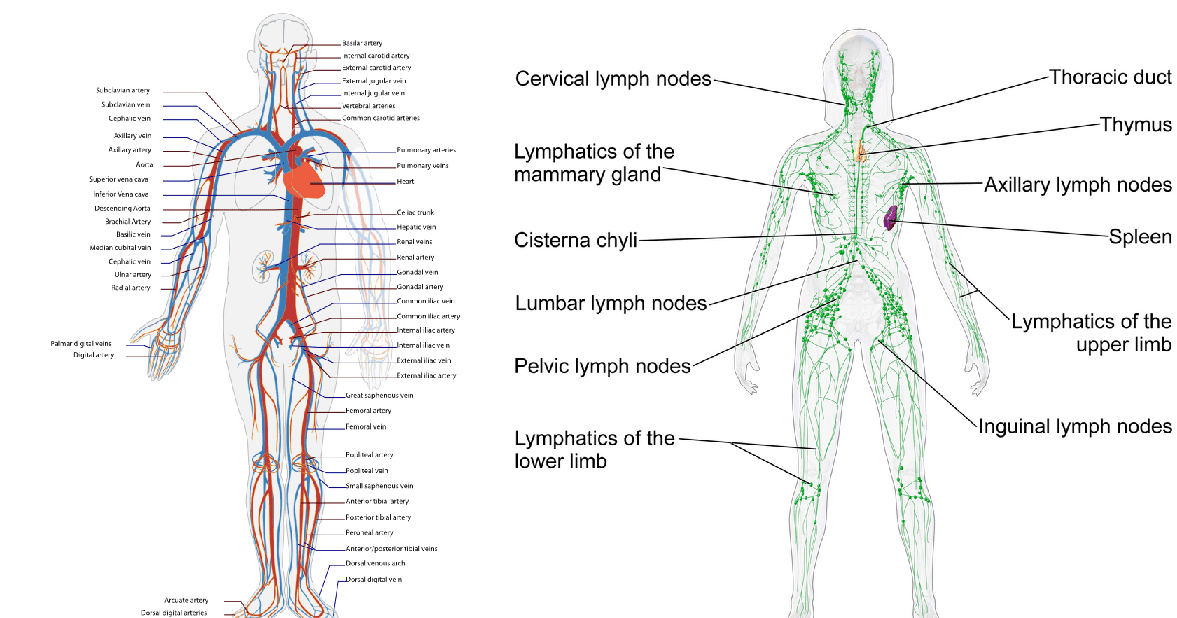 In this regard, the appointment of subsequent therapy and dynamic monitoring of the patient is one of the most important stages after the operation.
In this regard, the appointment of subsequent therapy and dynamic monitoring of the patient is one of the most important stages after the operation.
Physiotherapy
Physiotherapy is one of the treatments for enlarged lymph nodes behind the peritoneum. Its main task is to increase blood circulation and lymph flow in the diseased area, reduce inflammation and swelling, as well as reduce pain.
Physiotherapy uses a variety of methods including:
- Ultrasound treatments . This method allows you to speed up the healing process and has an anti-inflammatory effect.
- Magnetotherapy . With the help of magnetic fields, restoration of damaged tissues and an increase in blood circulation in the diseased area are achieved.
- Electromyostimulation . This method is used to strengthen the muscular corset and increase tissue mobility.
- Laser therapy . Laser radiation helps to reduce pain and accelerates the healing process of wounds and damaged tissues.

In most cases, physiotherapy is carried out in tandem with other treatments such as drug therapy or surgery. However, its use can be prescribed as an independent method of treatment. Before starting physiotherapeutic procedures, it is necessary to consult with your doctor.
Alternative treatments
There are several alternative treatments for enlarged lymph nodes behind the peritoneum. One of these is homeopathy, which can help reduce knots and strengthen the immune system.
Ayurveda, the ancient system of Ayurvedic medicine, can also be effective in treating swollen lymph nodes behind the peritoneum. Medicinal herbs and herbal preparations such as Indigo Carmine, Manjista and Rosemary help to clear the lymph and reduce knots.
Healing techniques such as yoga and meditation can also help treat swollen lymph nodes behind the peritoneum. These techniques allow you to gain peace and relieve stress, speeding up the recovery process.
Consult your physician for advice on the most appropriate treatment options based on your individual case.
Expert advice
Do not self-medicate. Swollen lymph nodes behind the peritoneum may be a sign of a serious illness. Do not take any medication without consulting your doctor. Only a specialist can offer the correct diagnosis and treatment.
Conduct annual surveys. If you are at risk of developing a tumor, including cancer, do not miss your regular check-ups. They can help to identify the disease in the early stages, when treatment is most effective.
Follow your healthy lifestyle. Proper nutrition, exercise, adequate rest and avoidance of bad habits will help strengthen the immune system and prevent the development of diseases associated with the lymphatic system.
Seek medical attention if symptoms occur. If you have a fever, weight loss, frequent infections, or enlarged nodules, see your doctor. He may order additional tests and examinations to determine the cause of your condition.
Watch your lymphatic system from now on. If you have had swollen lymph nodes behind your peritoneum, you are at increased risk of recurrence. Monitor your condition, be examined, if necessary, to prevent the development of more serious diseases.
Life after treatment
After successful treatment of enlarged lymph nodes behind the peritoneum, the patient’s life changes for the better. He can again enjoy his usual activities, work and communication with people. However, do not forget that maintaining good health is important to prevent a possible recurrence of the disease. Patients who have been treated for enlarged lymph nodes behind the peritoneum should take steps to maintain their health.
Good nutrition: after treatment, it is necessary to establish proper nutrition in order to maintain a healthy metabolism, strengthen the immune system and prevent possible relapses of the disease. Try to eat more fresh fruits and vegetables, as well as foods rich in proteins, iron, antioxidants and other beneficial substances.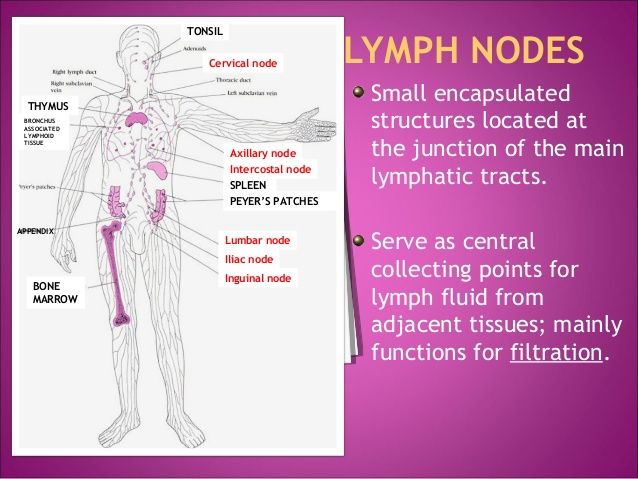
Regular exercise: exercise is a necessary part of a healthy lifestyle after lymphoma treatment and helps to strengthen the immune system, improve circulation and reduce stress. Start with small loads and gradually increase them so as not to harm your health.
Regular medical check-ups: Regular medical check-ups are essential to prevent a possible recurrence of the disease. This will allow you to identify possible changes in the body at an early stage and take timely measures.
Psychological support: Many patients may experience emotional stress and anxiety after treatment, so it is important to get psychological support from family, friends or professionals.
- Eat a healthy diet rich in fruits, vegetables, and protein
- Start with little physical activity and gradually increase it
- Get regular medical check-ups
- Get psychological support from loved ones or professionals
In general, maintaining a healthy lifestyle Proper nutrition, regular exercise, medical examinations and communication with loved ones will help maintain health after successful treatment of enlarged lymph nodes behind the peritoneum.
How to protect yourself from getting sick:
1. Maintain good hygiene: Wash your hands regularly and communicate with people who also take care of their hygiene. This will help avoid contact with pathogens.
2. Eat right: Eat foods fortified with vitamins and minerals and avoid overeating. It’s best to choose fresh produce and make sure it’s been stored at the correct temperature.
3. Keep your immune system in shape: Improve your physical fitness, including regular exercise and adequate rest. This will help strengthen the immune system, which protects the body from disease.
4. Avoid contact with healthy people: If you have a weak immune system or are in a danger zone for infections, avoid contact with healthy people to avoid getting infected. Wear a protective mask and keep the distance between people.
5. Take care of yourself after returning from a trip: If you have visited any country where there have been epidemics of certain diseases, check your health and watch for symptoms. Take a test if you feel anything out of the ordinary.
Take a test if you feel anything out of the ordinary.
6. Do not self-medicate: Never take medication without consulting your doctor. Some medications can have side effects and harm your health.
7. Get vaccinated: Vaccination is one of the most effective ways to protect against disease. Follow your doctor’s advice and get vaccinated against diseases before disease season begins.
8. Look after your loved ones: No matter how busy you are, do not forget about the health of your loved ones. Make sure they follow the same hygiene and healthy living guidelines.
9. Don’t panic: Panic can only make things worse. If you suspect a disease, see your doctor for advice and treatment.
10. Follow your doctor’s advice: Once your doctor has made a diagnosis and prescribed treatment, follow his advice to quickly get back to health.
When should I see a doctor?
If you notice swollen lymph nodes behind the peritoneum, be sure to see a doctor. Do not postpone a visit to a specialist if the following symptoms persist for more than two weeks:
Do not postpone a visit to a specialist if the following symptoms persist for more than two weeks:
- pain in the lymph nodes;
- persistent cough;
- high temperature;
- weight loss without explanation;
- weakness and fatigue.
You should also see your doctor if you have recently received chemotherapy or radiotherapy, or if you have previously been diagnosed with cancer or other diseases that can cause swollen lymph nodes.
The doctor will examine you and order additional tests to help determine the cause of the swollen lymph nodes. After receiving the results and diagnosis, the doctor will suggest the appropriate therapy depending on the cause of the disease.
Video on the topic:
Question-answer:
What causes can lead to an increase in lymph nodes behind the peritoneum?
Swollen lymph nodes behind the peritoneum can be caused by infectious diseases, including fungal, bacterial and viral, as well as malignant tumors and systemic diseases.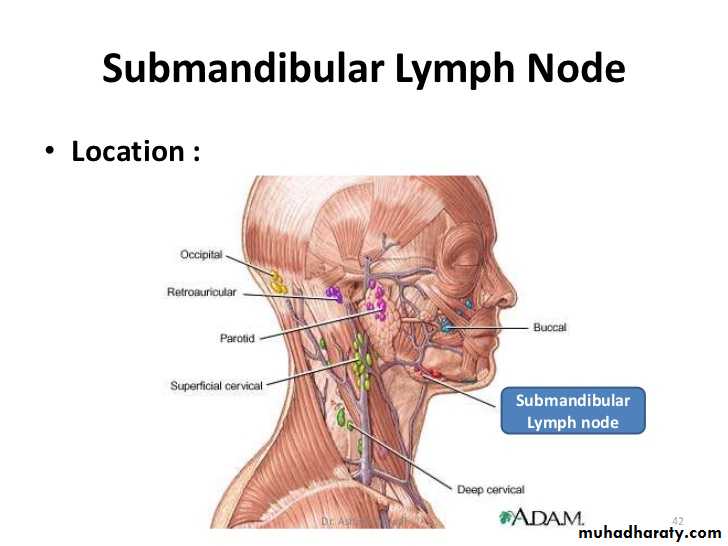
What symptoms may indicate enlarged lymph nodes behind the peritoneum?
Symptoms may depend on the cause of the swollen lymph nodes, but are usually associated with abdominal pain, fever, weakness, loss of appetite, and weight loss.
How is swollen lymph nodes behind the peritoneum diagnosed?
Various methods, such as ultrasound, MRI, CT scan, biopsy, and others, can be used to diagnose enlarged lymph nodes behind the peritoneum.
What is lymphadenopathy?
Lymphadenopathy is an enlargement of the lymph nodes as a result of infectious diseases, tumors or other pathological processes. Often this is a symptom of an illness that needs to be treated.
How long can the treatment of enlarged lymph nodes behind the peritoneum last?
The duration of treatment for enlarged lymph nodes in the peritoneum depends on the cause and severity of the disease. Treatment can last from several weeks to several months. It is necessary to strictly follow the recommendations of the doctor and not stop treatment without his permission.

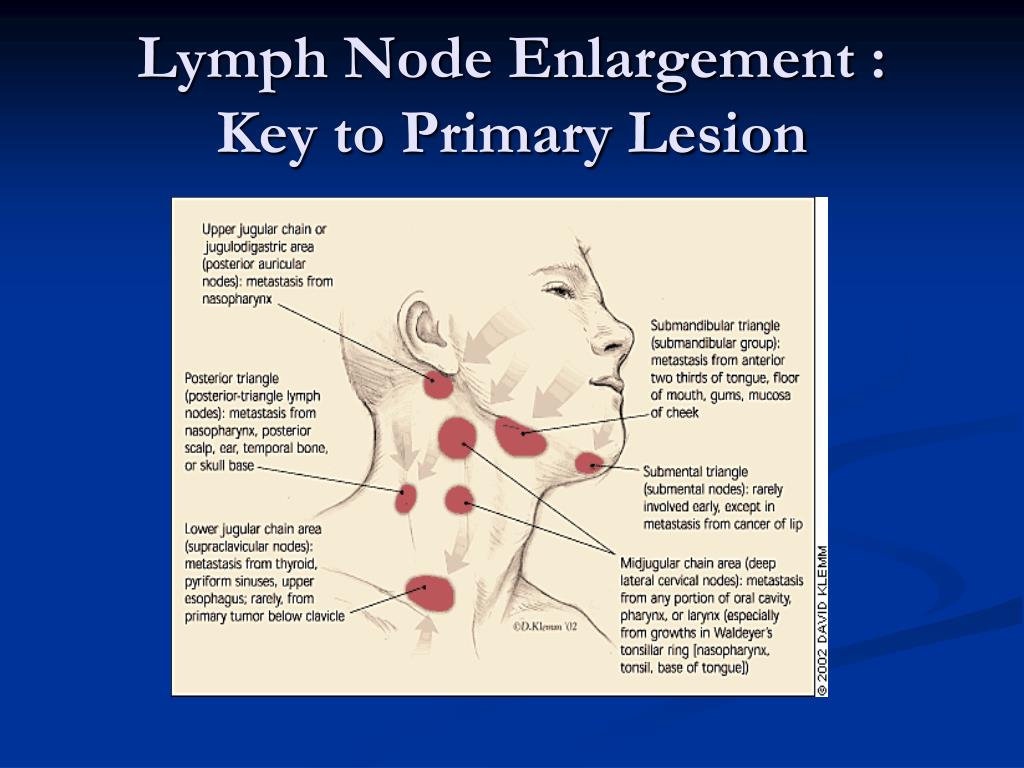
 19.0.4 What is lymphadenopathy?
19.0.4 What is lymphadenopathy?